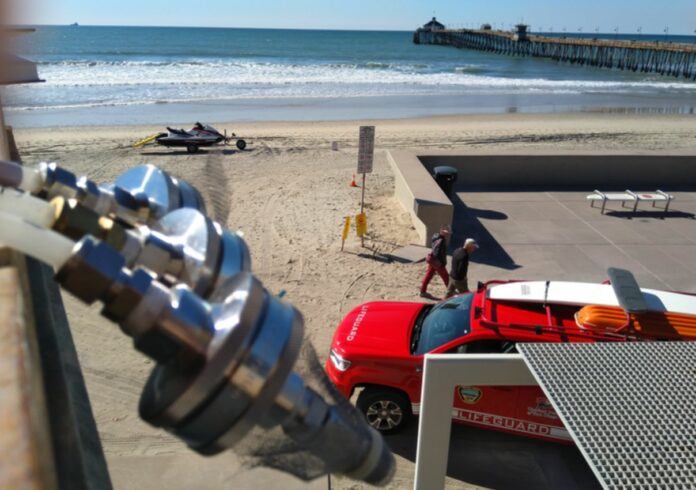Historically, coastal water pollution has only been seen as a waterborne issue.
Typically, people are concerned about the risks associated with swimming or surfing, but they tend not to worry about inhaling aerosols, despite the fact that these particles can travel significant distances, putting far more people at risk than just those who are swimming or near the water.
According to a new study headed by Scripps Institute of Oceanography at UC San Diego, coastal water pollution transfers to the atmosphere in the form of sea spray aerosol, which may reach anyone other than beachgoers, surfers, and swimmers.
Rainfall at the US-Mexico border complicates wastewater treatment, resulting in untreated sewage pouring into the Tijuana River and into the ocean in south Imperial Beach.
For many years, Imperial Beach’s coastline waters have been chronically polluted by this influx of toxic water.
According to new study, sewage-polluted coastal waters are transferred to the atmosphere in the form of sea spray aerosol, which is created by breaking waves and bursting bubbles. Aerosolized saltwater includes chemical substances, viruses, and microorganisms.
The results were published in the journal Environmental Science & Technology today.
According to lead researcher Kim Prather, Distinguished Chair in Atmospheric Chemistry and Distinguished Professor at Scripps Oceanography and UC San Diego’s Department of Chemistry and Biochemistry, an estimated 13 billion gallons of sewage-contaminated waters have entered the ocean via the Tijuana River this winter.
According to Prather, their findings indicate that as much as 75% of the bacteria present in the air at Imperial Beach is a result of sewage in the surf zone becoming aerosolized. This highlights a critical issue with the way coastal water pollution has been perceived in the past, as it has typically been viewed as only affecting those who directly interact with the water. Despite the fact that these aerosols can travel great distances and put many more people at risk than just those at the beach or in the water, people have not been as concerned about the risks associated with inhaling them.
Between January and May 2019, the team collected samples of water from the Tijuana River and coastal aerosols at Imperial Beach.
The researchers next used DNA sequencing and mass spectrometry to trace the origin of bacteria and chemical compounds found in coastal aerosol to the sewage-polluted Tijuana River that empties into the ocean.
It was found that bacteria and chemicals from the Tijuana River were in aerosols from the ocean.
The team is now carrying out follow-up studies to look for viruses and other airborne diseases.
Prather and colleagues warn that the research does not prove that sewage in sea spray aerosol is making people ill.
The majority of bacteria and viruses are non-lethal, and just because bacteria are present in sea spray aerosol does not always indicate that pathogenic or other germs go airborne.
More research is required, according to the authors, into risk factors such as infectiousness, exposure levels, and other variables.
To investigate possible connections between bacteria and chemicals in sea spray aerosol and sewage in the Tijuana River, three different research groups worked together, led by Prather in collaboration with Rob Knight of the UC San Diego Jacobs School of Engineering and School of Medicine, and Pieter Dorrestein of the UC San Diego Skaggs School of Pharmacy and Pharmaceutical Science, both affiliated with the Department of Pediatrics.
Matthew Pendergraft, the lead author and a recent PhD graduate from Scripps Oceanography, highlighted that this study emphasizes the fact that coastal communities can be exposed to coastal water pollution even if they do not enter the polluted water. He noted that additional research is needed to fully assess the risks associated with inhaling aerosolized coastal water pollution, but these findings make a compelling case for prioritizing efforts to clean up coastal waters.
Image Credit: Matthew Pendergraft
